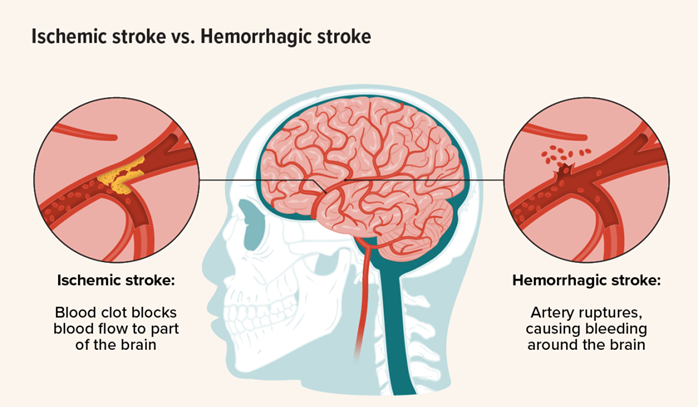A nurse is caring for a client with a myocardial infarction. The client questions the need for cardiac rehabilitation since "my heart is already damaged." Which of the following is the appropriate nursing response?
"Diet and exercise is good for you and good for your heart."
"It's not unusual to feel that way at first, but once you learn the routine, you'll enjoy it."
"Cardiac rehabilitation cannot undo the damage to your heart, but it can help you get back to your previous level of activity safely."
"Your doctor is the expert here, and I'm sure he would only recommend what is best for you."
The Correct Answer is C
Choice A reason: "Diet and exercise is good for you and good for your heart." This statement is true, but it is not the appropriate nursing response. It does not address the client's concerns or provide any specific information about cardiac rehabilitation. It may also sound dismissive or patronizing to the client.
Choice B reason: "It's not unusual to feel that way at first, but once you learn the routine, you'll enjoy it." This statement is empathetic, but it is not the appropriate nursing response. It does not explain the purpose or benefits of cardiac rehabilitation. It may also sound unrealistic or optimistic to the client.
Choice C reason: "Cardiac rehabilitation cannot undo the damage to your heart, but it can help you get back to your previous level of activity safely." This statement is the appropriate nursing response. It acknowledges the client's condition and provides factual information about cardiac rehabilitation. It also emphasizes the positive outcomes of cardiac rehabilitation, such as improving physical function, reducing symptoms, and preventing further complications.
Choice D reason: "Your doctor is the expert here, and I'm sure he would only recommend what is best for you." This statement is respectful, but it is not the appropriate nursing response. It does not answer the client's question or provide any education about cardiac rehabilitation. It may also sound evasive or deferential to the client.
Nursing Test Bank
Naxlex Comprehensive Predictor Exams
Related Questions
Correct Answer is D
Explanation
Choice A reason: The AP's ability to complete the task without assistance is not one of the five rights of delegation. The nurse is responsible for providing adequate supervision and guidance to the AP, and ensuring that the task is done correctly and safely.
Choice B reason: The AP's ability to prioritize is not one of the five rights of delegation. The nurse is responsible for assigning tasks based on their urgency and importance and communicating clear expectations and deadlines to the AP.
Choice C reason: The AP's rapport with clients is not one of the five rights of delegation. The nurse is responsible for maintaining a therapeutic relationship with clients and respecting their preferences and needs.
Choice D reason: The AP has the knowledge and skill to perform the task is one of the five rights of delegation. The nurse is responsible for assessing the AP's competence and readiness to perform the task, and providing appropriate training and feedback if needed.

Correct Answer is A
Explanation
Choice A reason: Monitoring vital signs and neurological status frequently is a priority intervention for a client who has experienced a hemorrhagic stroke, as it helps to detect any changes in the client's condition and guide appropriate treatment. Hemorrhagic stroke is a medical emergency that occurs when a blood vessel in the brain ruptures and causes bleeding into the brain tissue. This can lead to increased intracranial pressure, cerebral edema, and brain damage. Therefore, the nurse should monitor the client's blood pressure, pulse, respiration, temperature, level of consciousness, pupil reaction, motor function, and sensory function frequently and report any abnormalities to the health care provider.
Choice B reason: Maintaining strict bed rest to minimize cerebral blood flow is not a priority intervention for a client who has experienced a hemorrhagic stroke, as it may not prevent further bleeding or improve the client's outcome. In fact, strict bed rest may increase the risk of complications such as deep vein thrombosis, pulmonary embolism, pneumonia, pressure ulcers, and muscle atrophy. The nurse should follow the health care provider's orders regarding the client's activity level and position. The nurse should also provide adequate hydration, nutrition, skin care, and comfort measures to the client.
Choice C reason: Administering anticoagulant medications as prescribed is not a priority intervention for a client who has experienced a hemorrhagic stroke, as it may worsen the bleeding and increase the risk of intracranial hemorrhage. Anticoagulant medications are used to prevent or treat ischemic stroke, which is caused by a blood clot that blocks a blood vessel in the brain. However, anticoagulant medications are contraindicated in hemorrhagic stroke, as they interfere with the blood's ability to clot and stop the bleeding. The nurse should avoid giving any medications that may affect coagulation or platelet function to the client unless ordered by the health care provider.
Choice D reason: Assisting the client with active range of motion exercises is not a priority intervention for a client who has experienced a hemorrhagic stroke, as it may not improve the client's neurological function or prevent complications. Active range of motion exercises are performed by the client with or without assistance from the nurse to maintain joint mobility and muscle strength. However, these exercises are not indicated in the acute phase of hemorrhagic stroke, as they may increase intracranial pressure or cause pain or discomfort to the client. The nurse should consult with the physical therapist before initiating any exercise program for the client.

Whether you are a student looking to ace your exams or a practicing nurse seeking to enhance your expertise , our nursing education contents will empower you with the confidence and competence to make a difference in the lives of patients and become a respected leader in the healthcare field.
Visit Naxlex, invest in your future and unlock endless possibilities with our unparalleled nursing education contents today
Report Wrong Answer on the Current Question
Do you disagree with the answer? If yes, what is your expected answer? Explain.
Kindly be descriptive with the issue you are facing.
